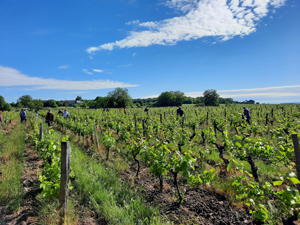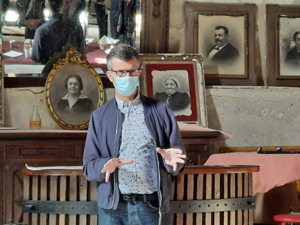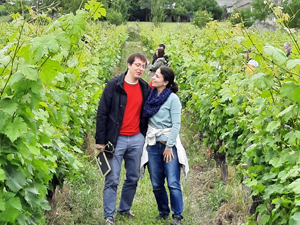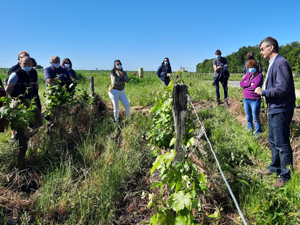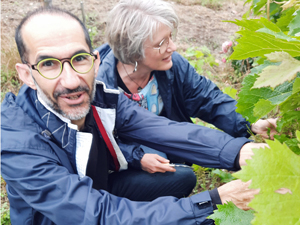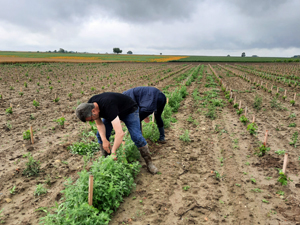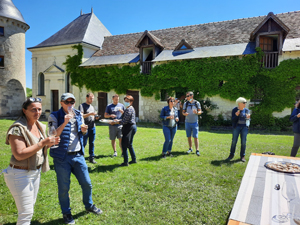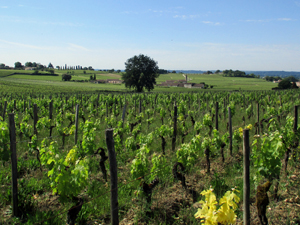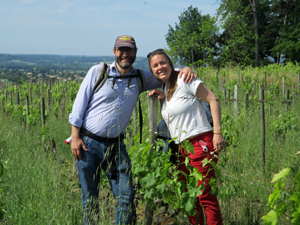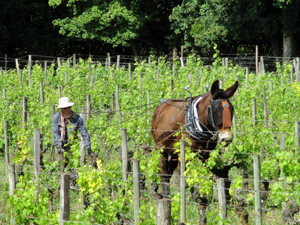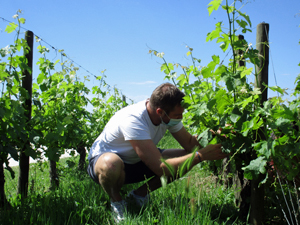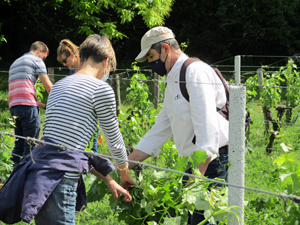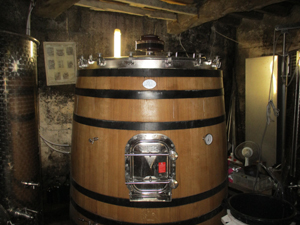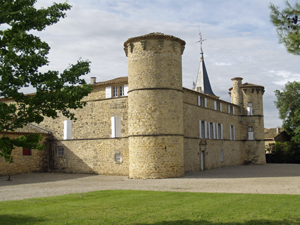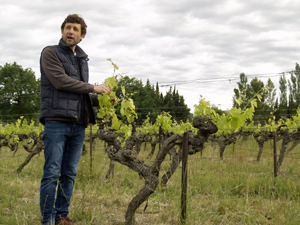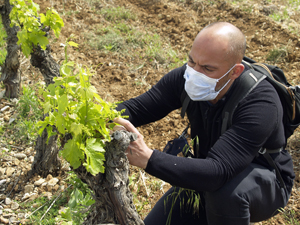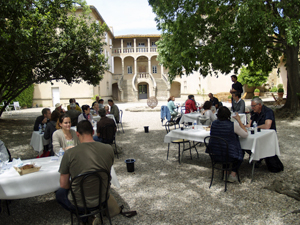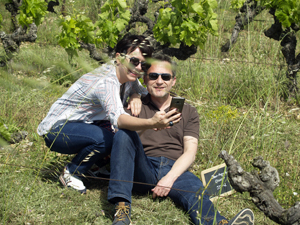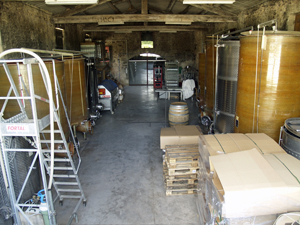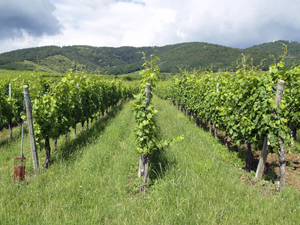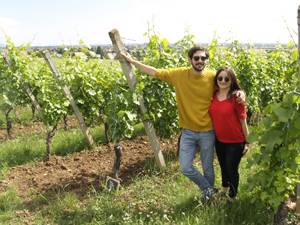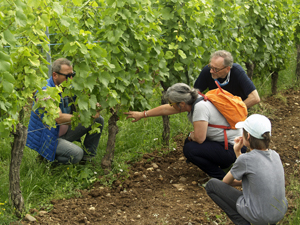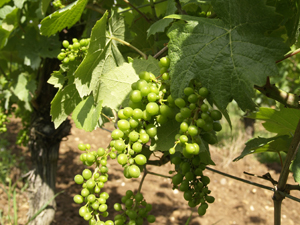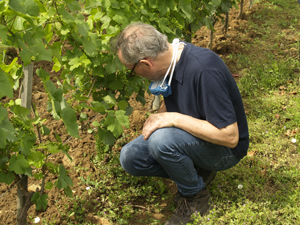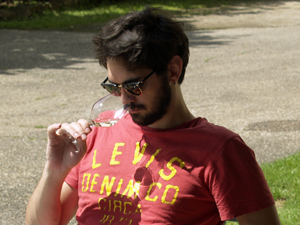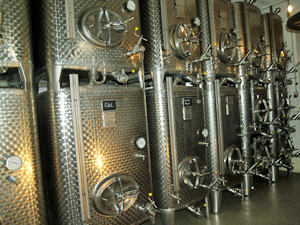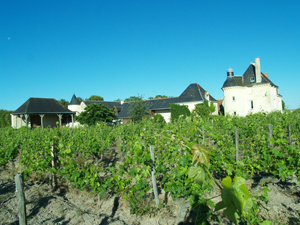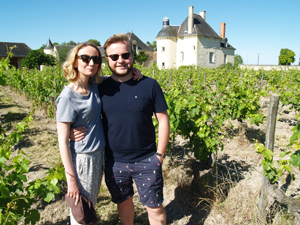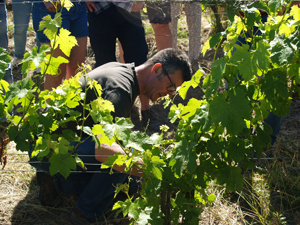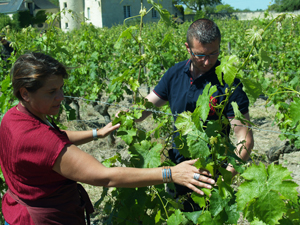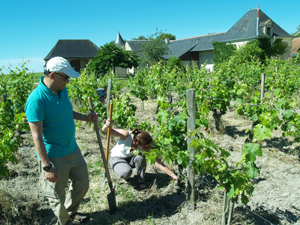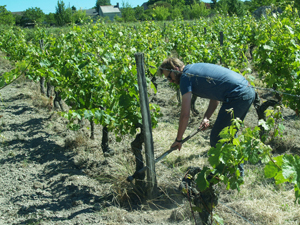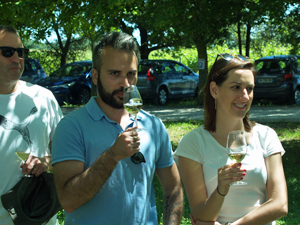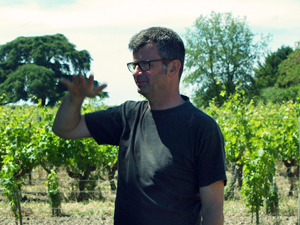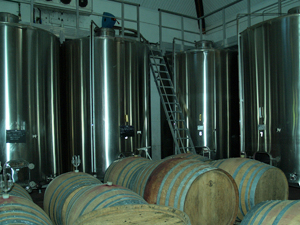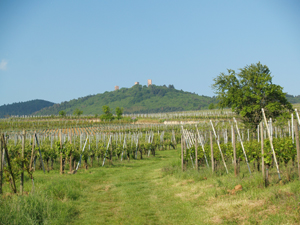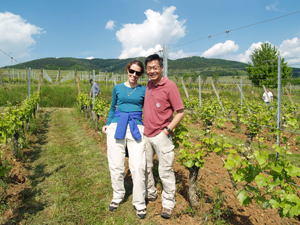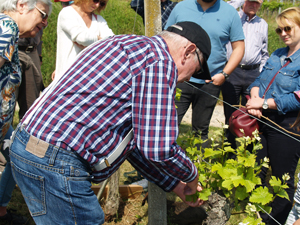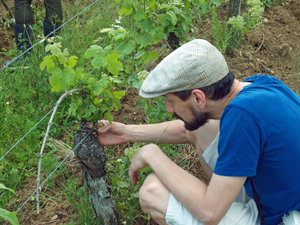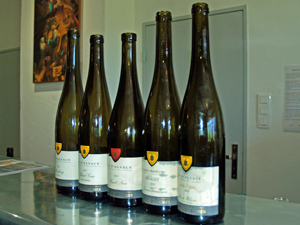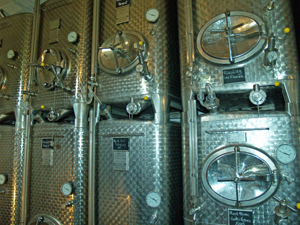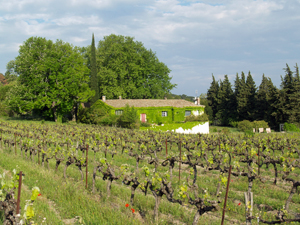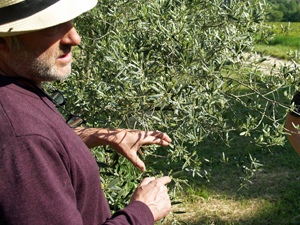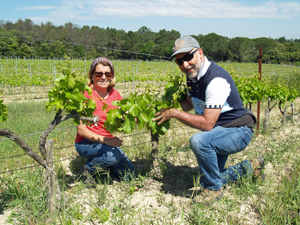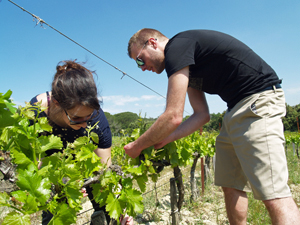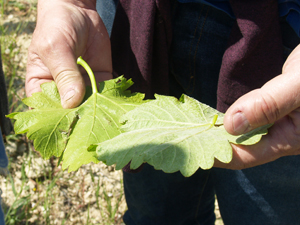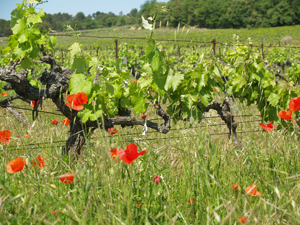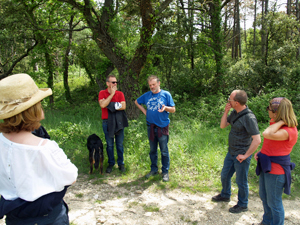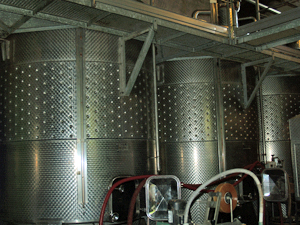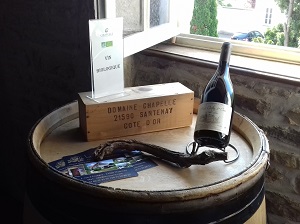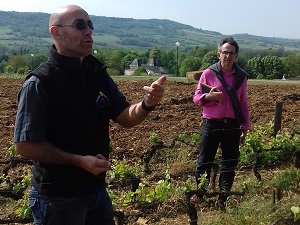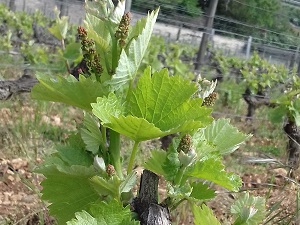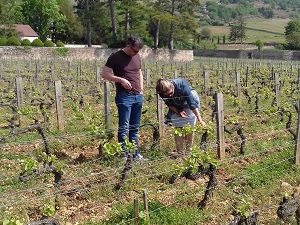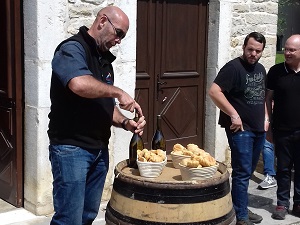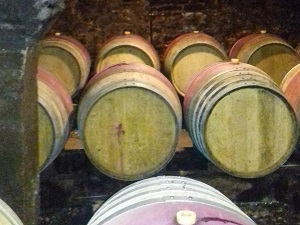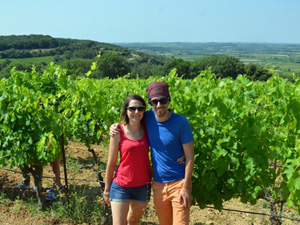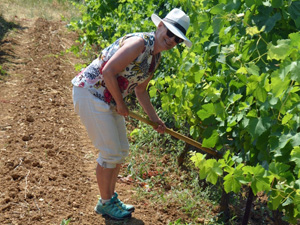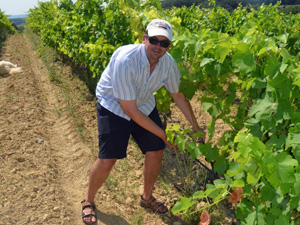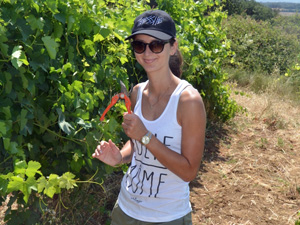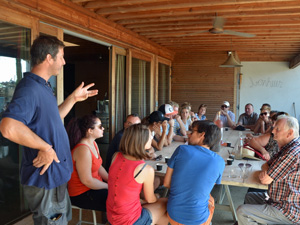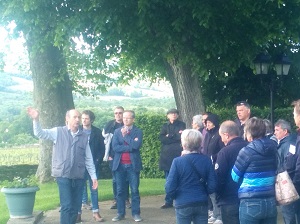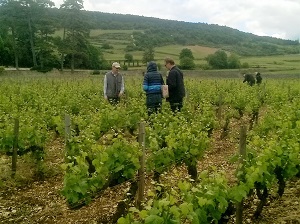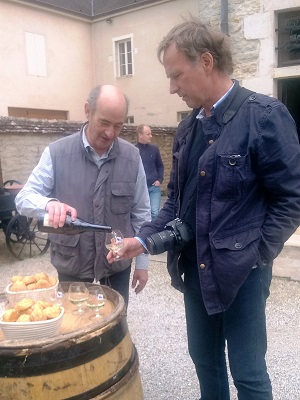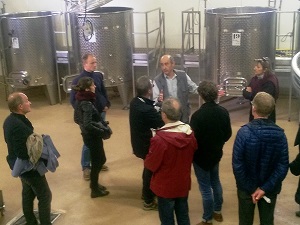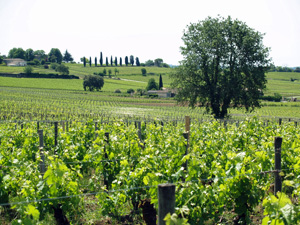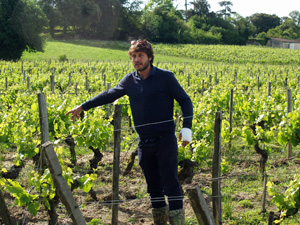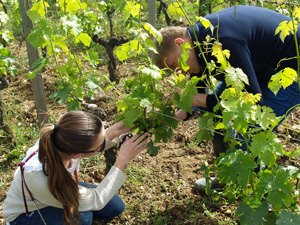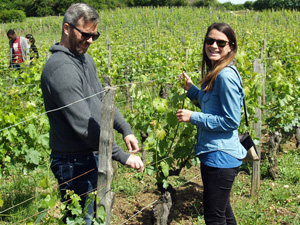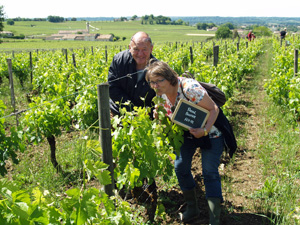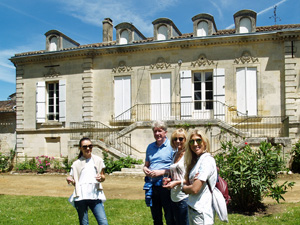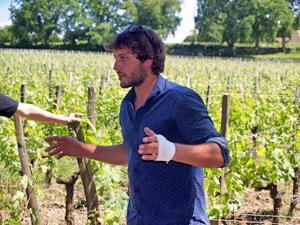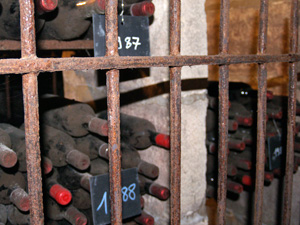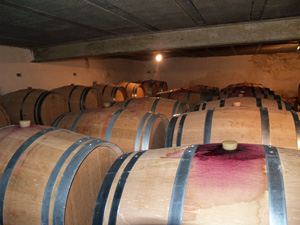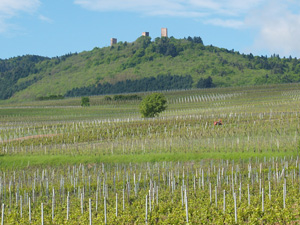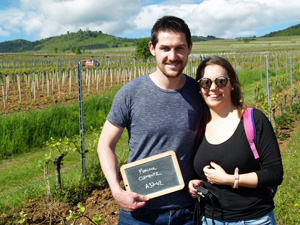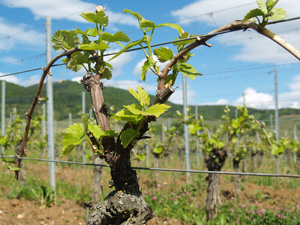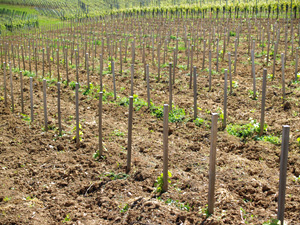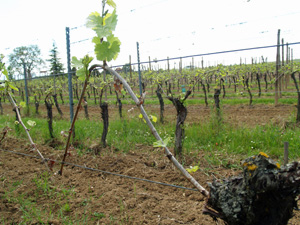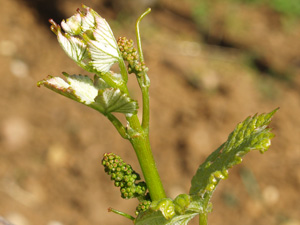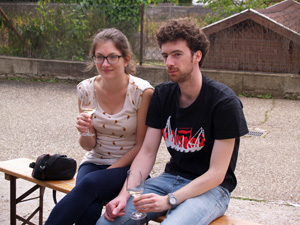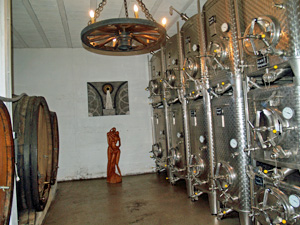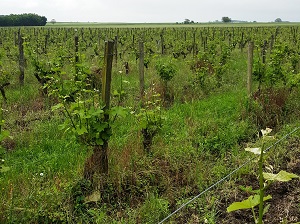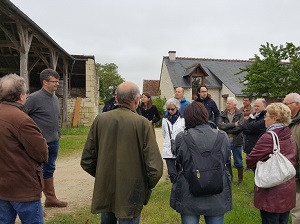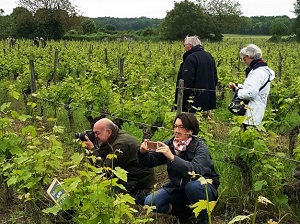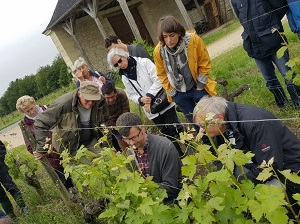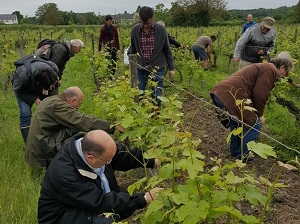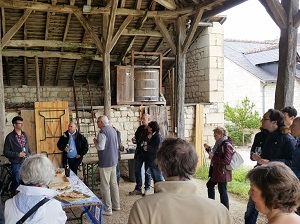Last weekend we were at Domaine de la Guicharde in the Rhone Valley for the very first wine experience day at Gourmet Odyssey’s new partner winery. The topic for the day was to learn about all of the work that happens in the vineyard to produce the best possible grapes at harvest time. As we were to learn there is much more to do than you might think, and with the winery being both organically and biodynamically certified, particular attention is paid to the well-being of the estate as a whole.
After the introductions to the day by Mark, the founder of Gourmet Odyssey and to the winery by Arnaud, the winemaker at Domaine de la Guicharde, we set off out into the vineyard. On the way we passed the olive grove which Arnaud nurtures to produce biodynamic olive oil. Arnaud had started working at 5:30 to prepare and dynamise a biodynamic silica treatment used to strengthen and invigorate the leaves. The vines had already been treated and as we walked by, we watched the olive trees being sprayed with the same dynamised water.
Arnaud explained the geological history of the Massif d’Uchaux wine-growing region, and how the surrounding area was covered in water during the Miocène era. He showed us the remnants of the ancient beach where shell fish can still be seen in the soil. Difficult to believe when you are looking out over the vines and garrigue towards the pre-Alps and the Mont Ventoux.
We then arrived in the vineyard where our adopted vines are located. The grapes picked in this plot are used to make the Terroir du Miocène red that is the wine chosen for the personalised wine bottles included in the Gourmet Odyssey Wine Experience. A name plate had been put in front of each micro-plot of vines and we took a few minutes to find our vines, take a few photos and encourage them to produce a good harvest this year!
Arnaud then explained the work that had been carried out in the vineyard during the winter to work the soil, prune the vines using the cordon de royat method, and repair the trellis system used to train the vines.
With the hot weather of the past couple of weeks, the buds on the vines had burst into life, and were starting their growth phase when the branches can grow several centimetres per day. Sometimes the vines get a little over excited with all this growth, and stems grow from lower down on the vine stock, two branches grow from the same bud, or there are simply too many branches appearing on the vine. To limit the number of grapes that the vine will produce and improve the quality, it is necessary to remove the unwanted branches. This is known as de-budding, and Arnaud explained how to select which branches to remove.
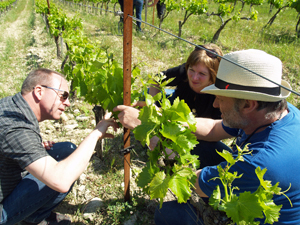
We then spread out in the vineyard, two to a row, and had a go at de-budding ourselves. As with pruning, it is very easy to understand in practice, but more difficult when you have to make the decision yourself! Each vine is unique, and sometimes you need to leave a branch that in theory you would remove, but that might be useful in the future to reshape the vine or bring the fruit-bearing branches back close to the vine stock.
Arnaud then took us on a short walk through the vineyard to show the different grape varietals and how to identify them just by looking at their leaves. The Grenache vines that we had been working on were a lot greener and had a shiny coat, compared to the adjacent plot of Syrah that was slightly yellower, and had a soft velvet duvet on the underside.
It wasn’t just the vines that were enjoying the good weather. The grass and wild flowers were also flourishing in the vineyard, and we admired the beauty of the poppies dancing in the breeze.
After the morning’s activities, we made our way back to the winery, and convened in the shade of the courtyard for an aperitif and lunch, which had been prepared by the excellent local restaurant, Le Temps de Vivre. The first wine that we tasted was the Cotes du Rhone white, Au tour de la Chapelle 2017. During the starter, main course, cheese and desert courses, we then tasted Le 17 rosé 2017 wine, the Cotes du Rhone Pur Rouge 2017 red, followed by two Cotes du Rhone Villages Massif d’Uchaux red wines, the Genest 2016 and the wine chosen for the Gourmet Odyssey Wine Experience, the Terroir du Miocène 2015.
In the afternoon, we ventured back into the vineyard. Arnaud explained the work to come between now and the harvest to raise the training wires, treat the vines, control the growth of the grass and wild flowers, potentially remove some of the leaves from the vines depending on the weather, and how to choose the date for the harvest.
We then spent a while talking about what is involved in organic and biodynamic wine-making. Arnaud is a passionate advocate of biodynamics and explained how he converted the winery and his reasons for doing so. He told us about the different preparations that are used to treat the vines and how the work in the vineyard is managed in coordination with the lunar calendar. We stopped to have a look at the dynamiser used to prepare the biodynamic tisanes.
We ended the day with a quick visit of the chai to see where the wine is made once the grapes have been picked. We’ll spend more time here during the Harvest Experience Day in September and the Vinification Experience Days next year.
Many thanks to Arnaud and all of the participants for making this such a great first wine experience day at Domaine de la Guicharde!
